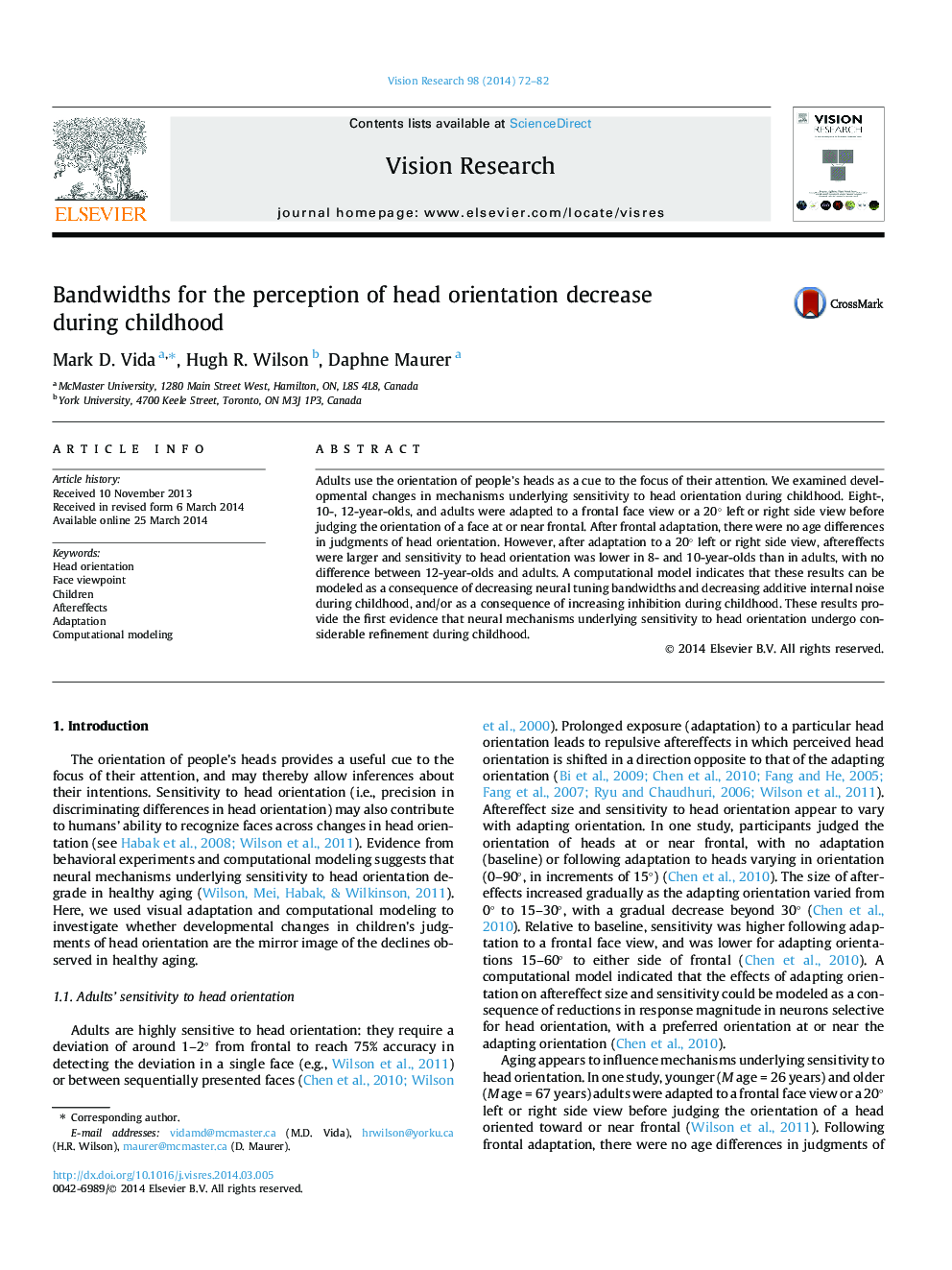| Article ID | Journal | Published Year | Pages | File Type |
|---|---|---|---|---|
| 6203514 | Vision Research | 2014 | 11 Pages |
â¢We examined judgments of head orientation in 8-, 10-, 12-year-olds, and adults.â¢After adaptation to a frontal face view, there were no age differences in judgments.â¢After 20° side adaptation, aftereffects were larger in younger children.â¢After 20° side adaptation, sensitivity was lower in younger children.â¢We model this pattern as a result of decreased neural bandwidths and noise after age 8.
Adults use the orientation of people's heads as a cue to the focus of their attention. We examined developmental changes in mechanisms underlying sensitivity to head orientation during childhood. Eight-, 10-, 12-year-olds, and adults were adapted to a frontal face view or a 20° left or right side view before judging the orientation of a face at or near frontal. After frontal adaptation, there were no age differences in judgments of head orientation. However, after adaptation to a 20° left or right side view, aftereffects were larger and sensitivity to head orientation was lower in 8- and 10-year-olds than in adults, with no difference between 12-year-olds and adults. A computational model indicates that these results can be modeled as a consequence of decreasing neural tuning bandwidths and decreasing additive internal noise during childhood, and/or as a consequence of increasing inhibition during childhood. These results provide the first evidence that neural mechanisms underlying sensitivity to head orientation undergo considerable refinement during childhood.
